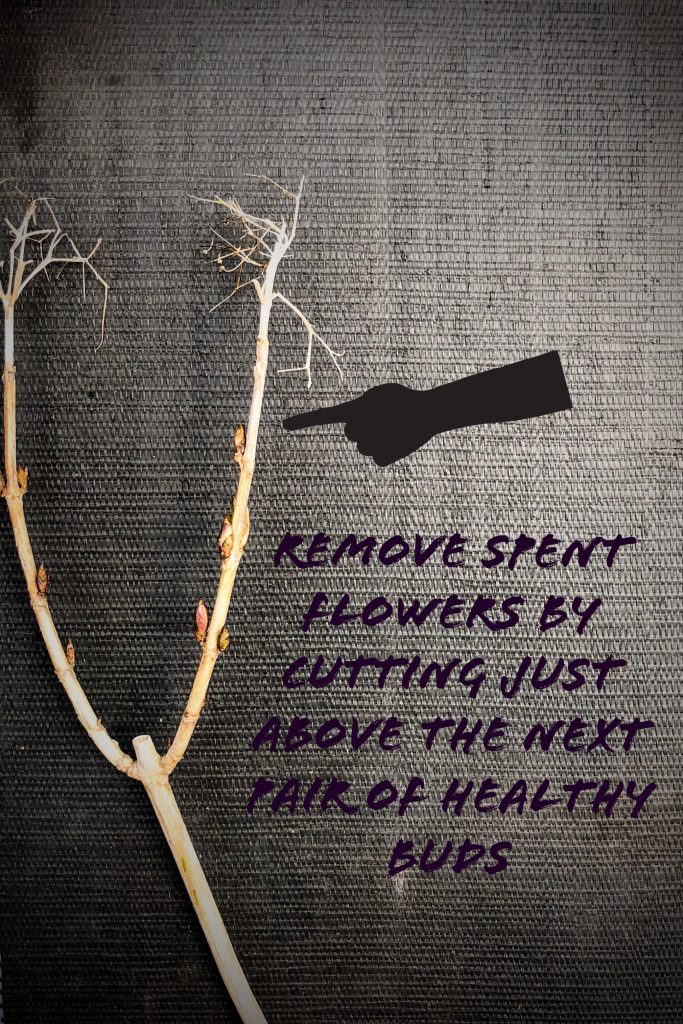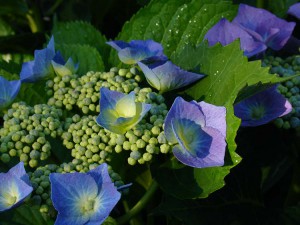There are a lot of things that define what kind of gardener a person is. Some of us are spring clean-up people, some are fall clean up people; some like to prune woodies in fall, some in spring. If you are a spring pruner, it’s the perfect time to get out your pruners and go to work! One of the plants often pruned this time of year is Hydrangea macrophylla.
When Pruning Hydrangeas keep your objectives in mind:
- Removal of spent flowers from the previous season.
- Removal of dead wood.
- Thinning out the shrub by removing: Stems that are older than three years; Large complex branches; Branches that cross the center and tend to rub on more desirable stems; Stems that run horizontally along the ground and root, increasing the overall size of the plant.
- Shaping the shrub into a natural-looking, balanced, spherical shape.



Follow these steps:
- Take a moment to look at the over-all shape and size of the plant. Is it too large for it’s space? Hydrangeas in foundation plantings tend to “eat the lawn” over time. Consider widening the bed to accommodate the mature size of the plants, instead of pruning the plant back to an unnatural-looking shape. * ‘Nikko Blue’ Hydrangeas, in particular, tend to get very tall and wide – covering windows and brushing against shingles on the side of the house. There is no way to keep a ‘Nikko Blue’ Hydrangea blooming each year and shorter than 4 feet, if you are battling huge plants, consider replacing them with a smaller variety.
- Remove all spent flowers from the tips of the stems. All pruning cuts should be made just above a healthy set of buds. There is no need to “tip branches” if there are no faded flowers to remove. Buds overwintering in the top portion of the plant have the potential to flower. If too much material is removed, the plant may not flower at all.
- Remove all dead and damaged stems. It is preferable to completely remove dead stems at ground level where possible.
- Remove about a third of the overall bulk of the stems, following the guidelines above. This helps increase sun and air circulation in the center of the plant, initiating flower bud formation and strong new growth from the base.
- If you must, cut back no more than a few feet from the top of the shrub, to get it below a window or railing. Keep in mind, the plant will quickly grow back to it’s natural size by the middle of the summer.
- Step back, and take a look at your work. Make final cuts, leaving a rounded, balanced shrub.

